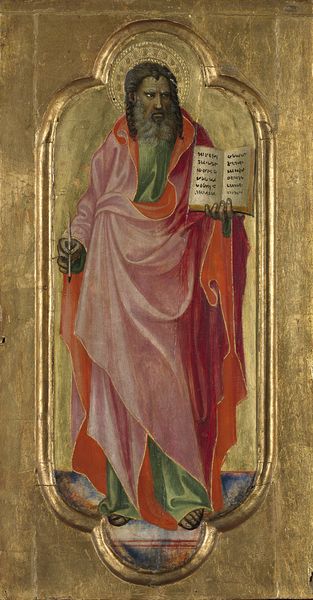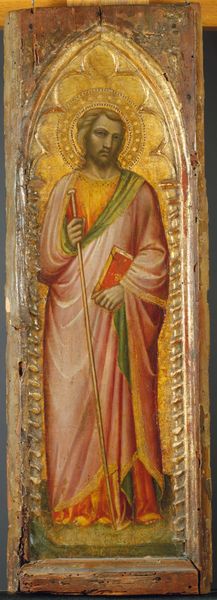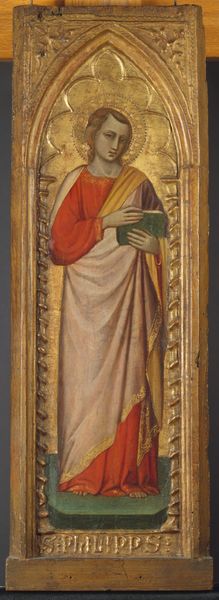
panel, painting, oil-paint
#
portrait
#
panel
#
painting
#
oil-paint
#
sienese-school
#
figuration
#
oil painting
#
italian-renaissance
#
early-renaissance
Dimensions: overall: 28.6 x 11.3 cm (11 1/4 x 4 7/16 in.) framed: 31.4 x 14 x 7.8 cm (12 3/8 x 5 1/2 x 3 1/16 in.)
Copyright: National Gallery of Art: CC0 1.0
Editor: This is Sassetta’s *Saint Apollonia*, an oil painting on panel from around 1435. There's a quiet dignity to her stance. I'm particularly struck by the contrast between the softness of her features and the instruments she holds. How do you interpret this work in the context of its time? Curator: Well, Sassetta places Apollonia, a virgin martyr, within a burgeoning Early Renaissance that's only just starting to value individual likeness. She represents so much more than her serene gaze lets on. Consider the patriarchal structures of 15th-century society: Apollonia refused to renounce her Christian faith, and as punishment, had all of her teeth violently extracted. This is a blatant act of torture rooted in suppressing female agency and silencing dissenting voices. What do you notice about the objects she is holding? Editor: One looks like a tooth, and the other maybe… pincers? That does contextualize her serene dignity a bit differently. She embodies strength through suffering. Curator: Precisely. Sassetta uses the very tools of her torture as symbols of her power and resistance. He challenges us to confront the violence inherent in the era's religious and social norms. The gold background, a traditional element, becomes charged with this tension. It's not just about heavenly glory; it's about bearing witness. Now, thinking about current society, how do the themes connect with struggles around female oppression today? Editor: It’s still resonant. It's about finding your voice despite attempts to silence you. Curator: Absolutely. This piece demonstrates the need to create art that speaks truth to power, echoing voices of the past while empowering those of the future. Editor: That is a powerful reframing that enhances how I see Early Renaissance paintings. It will impact my approach moving forward.
Comments
No comments
Be the first to comment and join the conversation on the ultimate creative platform.













